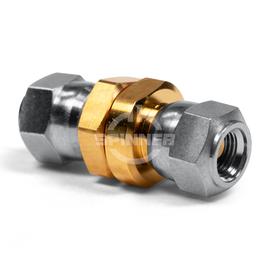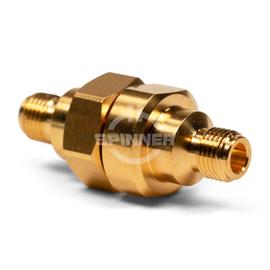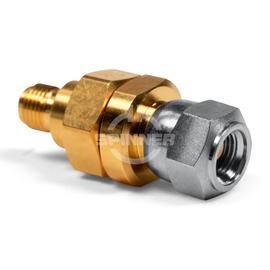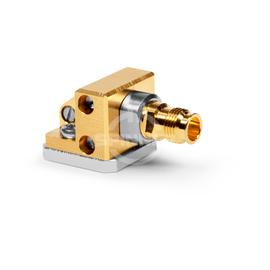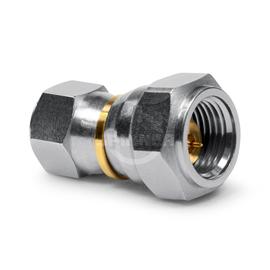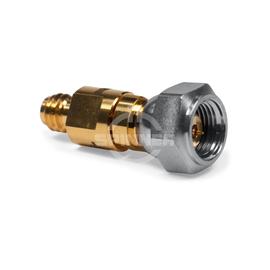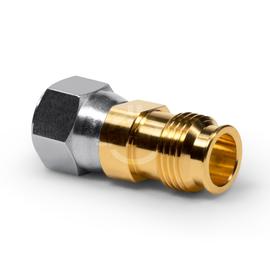Data and Power Transmission Rotary Joints for bottling lines: Power, Precision, and Seamless Connectivity!
In bottling lines, various types of data can be transmitted to monitor and control the bottling process. Some of the key types of data transmitted in bottling lines include:
- Production Data: This includes information about the number of bottles filled, the speed of the production line, and the overall production efficiency. It helps in monitoring the productivity and identifying any bottlenecks or issues in the process.
- Quality Control Data: Bottling lines transmit data related to quality control, such as measurements of fill levels, seal integrity, and labeling accuracy. This data helps ensure that the bottles are properly filled, sealed, and labeled according to the specifications.
- Machine Data: Bottling lines often transmit data from various sensors and monitoring devices installed on the machinery. This data can include temperature, pressure, flow rates, and other parameters to monitor the performance and health of the equipment. It enables timely maintenance and reduces the risk of breakdowns.
- Environmental Data: Some bottling lines transmit data related to environmental conditions, such as temperature and humidity in the production area. This information helps maintain optimal conditions for the bottling process and ensures product quality and safety.
- Inventory and Supply Chain Data: Bottling lines may transmit data regarding inventory levels of raw materials, packaging materials, and finished products. This data is essential for managing inventory levels, planning production schedules, and coordinating with suppliers and distributors.
- Energy Consumption Data: Monitoring energy usage is becoming increasingly important in bottling lines. Data related to energy consumption, such as electricity and compressed air, can be transmitted to optimize energy efficiency and identify opportunities for energy savings.
- Safety and Compliance Data: Bottling lines may transmit data related to safety measures, such as emergency stops, safety interlocks, and compliance with regulatory standards. This data helps ensure a safe working environment and adherence to industry regulations.
It's important to note that the specific types of data transmitted in bottling lines can vary depending on the industry, product being bottled, and the level of automation and sophistication of the production line.
The most common types of bottling machines used in various sectors of the beverage industry are:
- Filling Machines: Filling machines are used to fill bottles with liquid products such as water, juices, carbonated beverages, oils, sauces, and pharmaceuticals. Different types of filling machines include gravity fillers, piston fillers, vacuum fillers, and rotary fillers.
- Capping Machines: these machines are designed to securely seal bottles by applying caps or closures. They can handle various types of caps, including screw caps, snap-on caps, crown caps (used for bottles with carbonated beverages), and cork stoppers.
- Labeling Machines: Labeling machines apply labels to bottles, providing product information, branding, and regulatory details. They can handle various labeling techniques, such as wrap-around labels, front and back labels, and sleeve labels.
- Rinser Machines: Rinser machines clean bottles before the filling process by spraying water, air, or other cleaning solutions. These machines remove debris, dust, and contaminants from the bottles to ensure cleanliness and product quality.
- Cellophane Overwrapping Machines: These machines wrap bottles or packs with cellophane or other clear films to provide tamper-evident packaging, protection, and aesthetic appeal. They are commonly used for cosmetics, perfumes, and pharmaceutical products.
- Case Packing Machines: these machines automate the process of packing filled bottles into cases or cartons. They can handle various packaging formats, including cardboard boxes, trays, or shrink-wrapped packs.
- Bottle Inspection Machines: Inspection machines use advanced vision systems to inspect bottles for defects, such as cracks, leaks, or contaminants. These machines ensure product quality, safety, and compliance with regulatory standards.
- Depalletizing Machines: these machines automate the process of unloading bottles from pallets and transferring them to the bottling line. They enhance efficiency and reduce manual labour in the bottle loading process.
- Palletizing Machines: these machines handle the stacking and arrangement of filled bottles onto pallets, ensuring stability and facilitating efficient storage and transportation. They can create various pallet patterns based on specific requirements.
- Conveyor Systems: Although not a specific machine, conveyor systems play a vital role in bottling lines. They transport bottles between different machines, allowing for a continuous and automated production flow.
Rotary joints are commonly employed in situations where continuous rotation is required
Rotary joints are mechanical devices used in bottling lines to transmit data, power or fluids, such as liquids or gases, between rotating and stationary parts of the machinery. They are commonly employed in situations where continuous rotation is required while maintaining a connection for data, power or fluid transfer.
Rotary joints play a crucial role in enabling the transmission of data or information. For example:
- Sensor Signals: In some cases, rotary joints may be designed to accommodate the transmission of electrical or electronic signals from sensors or instruments mounted on rotating parts of the bottling machinery. These sensors could be measuring parameters like temperature, pressure, or flow rate, and the data collected from them can be transmitted through the rotary joint to the stationary part for monitoring or control purposes.
- Data signals: Rotary joints can also be equipped with special designs or features that allow the passage of data signals between devices on the rotating part of the bottling line and the stationary control systems or data acquisition units. The cables can carry various types of data, such as machine status, production metrics, or even video feeds for monitoring or analysis.
It's important to note that the design and capabilities of rotary joints used for data transmission may vary depending on the specific requirements of the bottling line and the type of data being transmitted. Specialized rotary joints with electrical slip rings or fiber optic connectors may be employed to ensure reliable and continuous data transfer in high-speed rotating applications.
Overcome challenges, embrace success
However, some common factors that contribute to the successful operation of data transmission with rotary joints in bottling lines are:
- Reliability: Data transmission rotary joints must be highly reliable to ensure continuous and uninterrupted data flow. They should be designed and manufactured to withstand the rigors of the bottling line environment, including vibrations, temperature variations, and exposure to liquids or chemicals. Robust construction and high-quality materials are essential for long-term reliability.
- Signal Integrity: Maintaining signal integrity is crucial for accurate data transmission. Rotary joints should minimize signal losses, interference, and noise to ensure that the transmitted data remains clear and undistorted. This requires careful attention to the design of the contacts, connectors, and shielding within the rotary joint.
- Low Signal Attenuation: Data transmission rotary joints should minimize signal attenuation to prevent signal degradation over the transmission distance. The joints should have low insertion loss and low crosstalk to preserve the quality and integrity of the transmitted data signals.
- Bandwidth and Speed: Bottling lines may require high-speed data transmission to handle the volume of data generated by sensors and monitoring devices. Data transmission rotary joints should be capable of supporting the required bandwidth and data transfer rates to ensure real-time monitoring and control.
- Compatibility: Rotary joints must be compatible with the specific data transmission protocols and interfaces used in the bottling line. They should support the necessary connectors, such as electrical slip rings or fiber optic connectors, to ensure seamless integration with the existing data communication infrastructure.
- Maintenance and Serviceability: Easy maintenance and serviceability are important for minimizing downtime and ensuring the longevity of the machinery. The joints should be designed for easy access and replacement of components, allowing for quick troubleshooting, repairs, or replacements when necessary.
- Customizability: Every bottling line may have unique requirements. The ability to customize rotary joints to accommodate specific data protocols, communication interfaces, or additional features is advantageous. This flexibility allows for the adaptation of the rotary joints to the specific needs of the bottling line.
By considering these success factors, bottling line operators can select and implement data transmission rotary joints from SPINNER that provide reliable and efficient communication between rotating and stationary parts, supporting the smooth operation of the bottling process.
Partner with the Experts
Our team of experienced engineers and industry experts is dedicated to delivering state-of-the-art solutions tailored to your unique needs. We prioritize durability, reliability, and compliance with stringent safety standards, ensuring your complete peace of mind. With our comprehensive support and superior products, you can confidently create captivating fun rides that surpass expectations.
Don't settle for less when it comes to data or power transmission in bottling lines. Experience the power, precision, and seamless connectivity of our rotating solutions. Join the ranks of leading technical engineers who trust our solutions to deliver extraordinary experiences. Contact us today to embark on a new era of engineering and innovation.
- High performance: SPINNER rotary joints offer low insertion loss or excellent VSWR (Voltage Standing Wave Ratio) performance, ensuring reliable transfer of electrical power, radiofrequency or optical signals with minimal power loss or signal distortion.
- Durability and reliability: SPINNER rotary joints are designed and manufactured to withstand harsh environmental conditions, which includes exposure to dust, moisture, corrosion or high temperatures, and frequent use, ensuring reliable and long-lasting performance. They are designed to withstand the constant rotation and the stresses associated with bottling lines operation.
- Minimal maintenance requirements: SPINNER rotary joints require minimal maintenance and are designed for easy repair and replacement, reducing downtime and maintenance costs.
- Wide range of options: SPINNER offers a wide range of rotary joint options, including different sizes, frequencies, technologies and (rf, fiber optics, Ethernet, …) and power handling capabilities, allowing for greater customization and flexibility in design.
- Integration with automation systems: SPINNER rotary joints can be integrated with automation systems for remote monitoring and control, allowing for more efficient and streamlined operations.
SPINNER rotary joints offer several advantages, including a wider range of options, higher electrical performance, and better durability and reliability. Additionally, SPINNER's focus on customization and flexibility allows for more tailored solutions to meet the specific needs of bottling lines.
